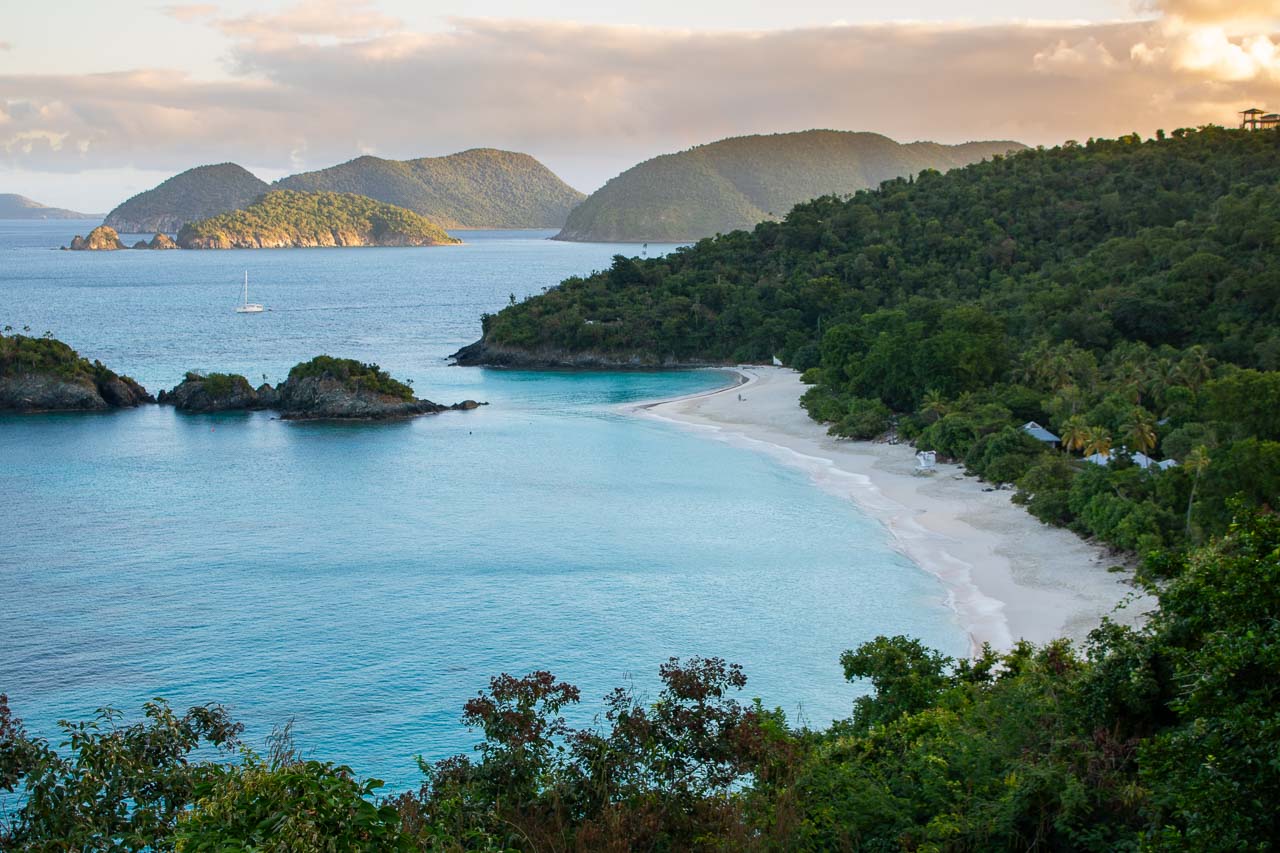How Much Time Do You Need in Virgin Islands National Park?
Nestled in the heart of the Caribbean, Virgin Islands National Park on St. John offers a tropical paradise filled with lush greenery, pristine beaches, and a rich cultural history. With its diverse attractions ranging from hiking trails and coral reefs to historic sugar plantation ruins, deciding how much time to spend here can be a challenge.
Whether you’re a day-tripper, a weekend adventurer, or a traveler with an extended itinerary, this guide, based on my own visit to the park, will help you make the most of your visit to Virgin Islands National Park.
How Much Time Do You Need in Virgin Islands National Park?
Although I usually recommend spending a couple of nights in a national park—and the same applies to Virgin Islands National Park—it’s also very much possible to get a taste of the park in just one day. That said, however, I think 4-5 days is the optimal amount of time to really explore this unique national park.
One-Day Visit to Virgin Islands National Park: A Taste of Paradise
If you only have a single day to explore Virgin Islands National Park, focus on its highlights to maximize your experience.
Morning: Snorkeling at Trunk Bay
Start your day early at Trunk Bay, one of the most famous beaches in the Caribbean. Known for its turquoise waters and the phenomenal Underwater Snorkel Trail, Trunk Bay offers a quintessential Virgin Islands experience.
Spend a couple of hours exploring the vibrant coral reefs, teeming with countless colorful fish and marine life like sea turtles and stingrays. If you don’t have your own snorkeling gear, you can rent a set on-site. Additionally, there are also restrooms, showers, a snack and drinks bar, and a beach shop.
Trunk Bay is one of the most popular beaches in the Virgin Islands, so I highly recommend arriving as early as you can in order to get a parking spot. (If you can’t find a spot in the morning, it’s worth returning in the early afternoon because many visitors tend to leave the beach after lunchtime to explore other parts of the park.)
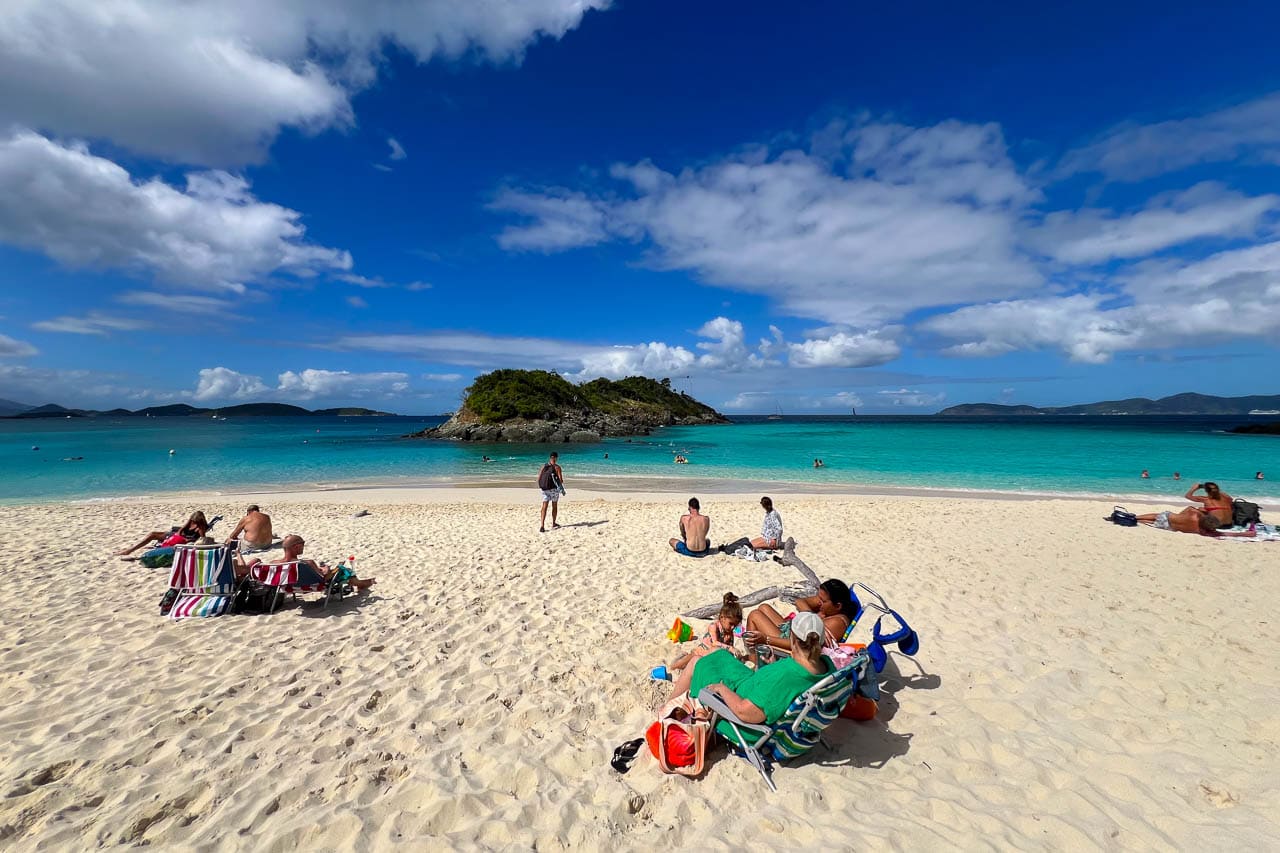
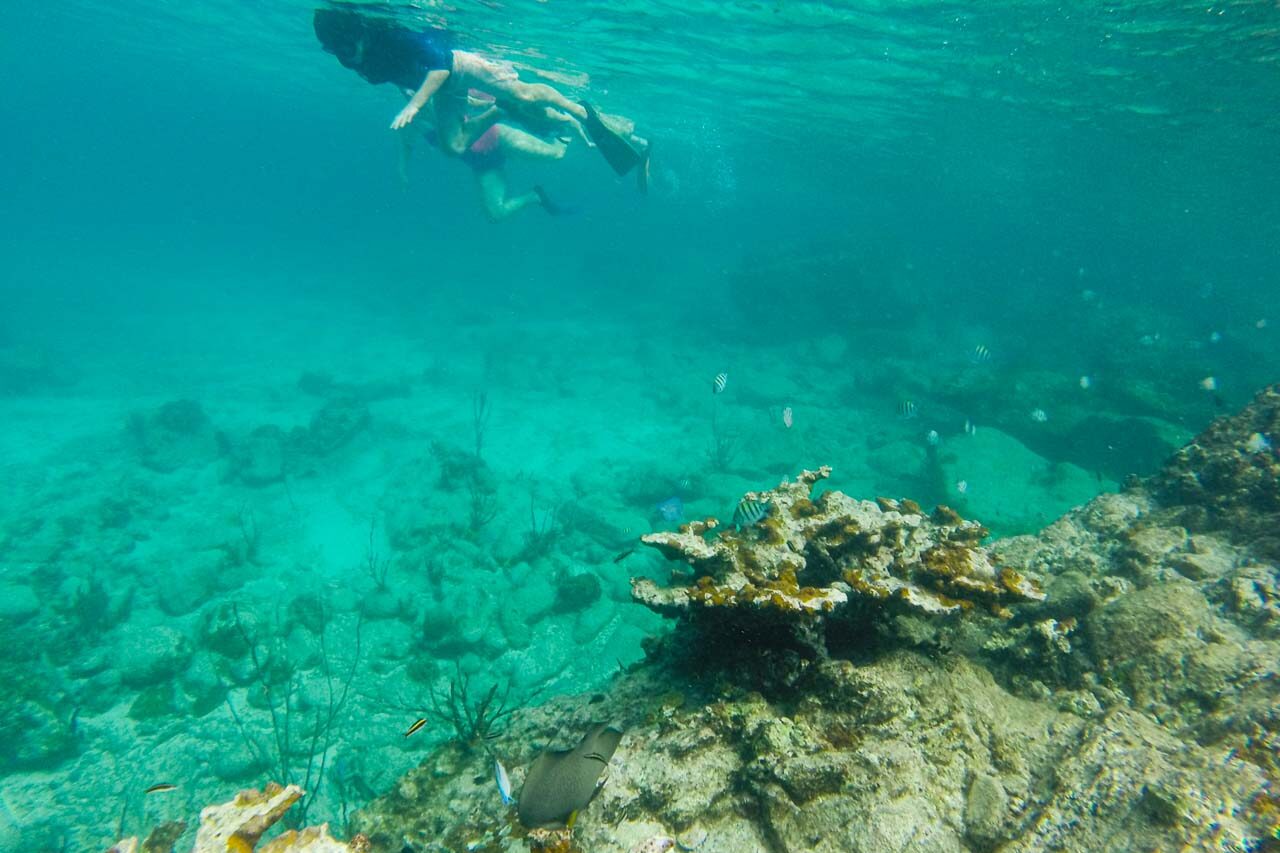
Afternoon: Hike the Cinnamon Bay Trail
After a morning at the beach, head to the nearby Cinnamon Bay Trail. This moderate-to-strenuous hike takes you from the Cinnamon Bay Sugar Plantation Ruins through lush tropical forests to the America Hill Great House Ruins. It’s 1.3 miles out and back.
The ruins at America Hill are one of my favorite historic places in Virgin Islands National Park. I particularly love its breathtaking views overlooking the north shore of St. John, both Maho and Francis bays, and a number of other Caribbean islands in the distance.
Although the trail is well-shaded and may offers some respite from the afternoon sun, it can be very humid in the rain forest, so I highly recommend bringing plenty of water on your hike.
After your hike, you can go for a quick dip in the Caribbean Sea at Cinnamon Bay Beach or grab some food at The Rain Tree Cafe at the Cinnamon Bay Beach & Campground.
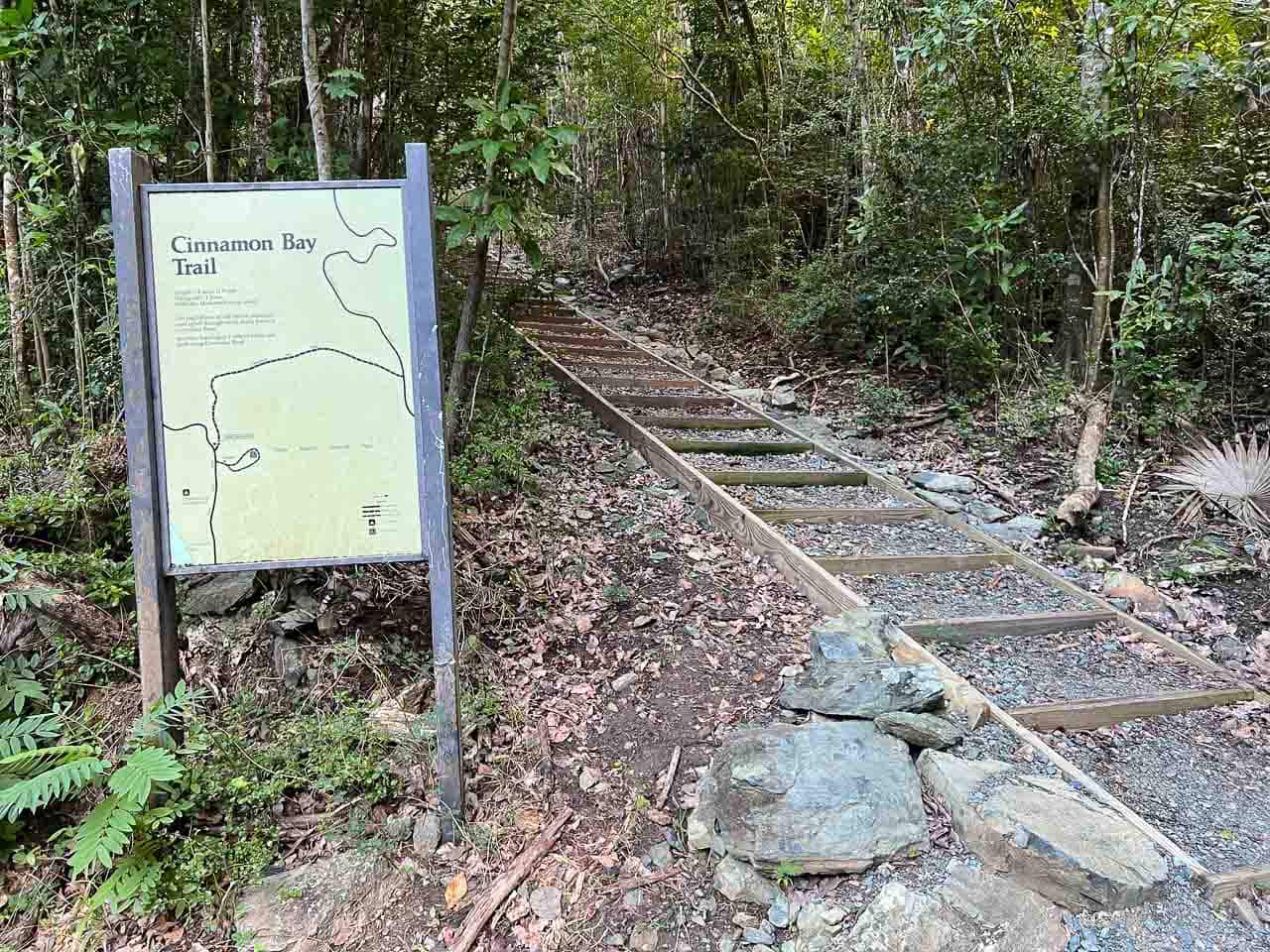
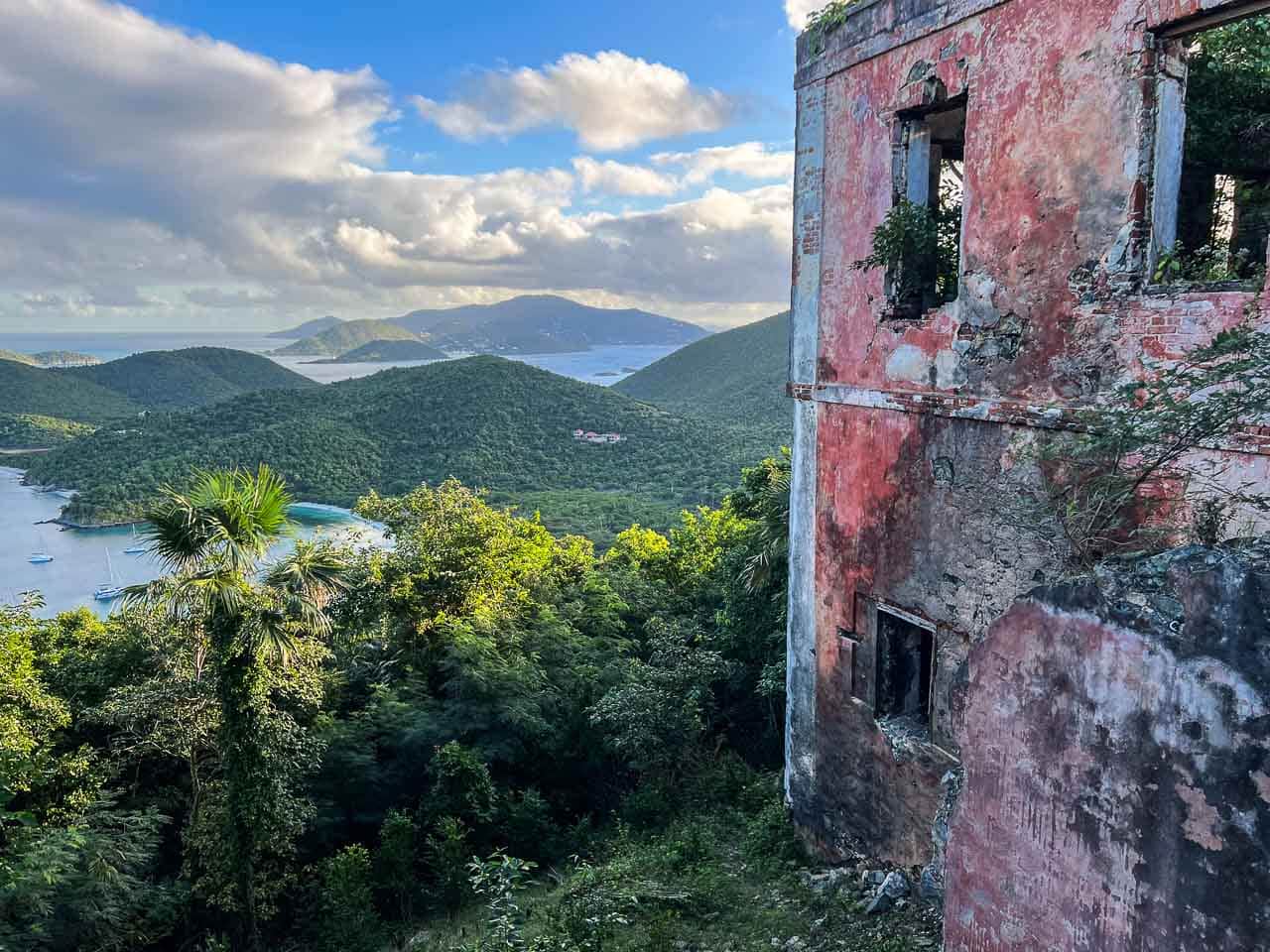
Evening: Sunset at Maho Bay
Wrap up your day at nearby Maho Bay, where you can relax on the narrow sand beach or take a kayak or stand-up paddle board out to explore the calm waters. Keep an eye out for sea turtles, which are frequently spotted in the sprawling seagrass beds in the bay.
Watching the sunset here is a perfect way to end a whirlwind one-day visit to Virgin Islands National Park.
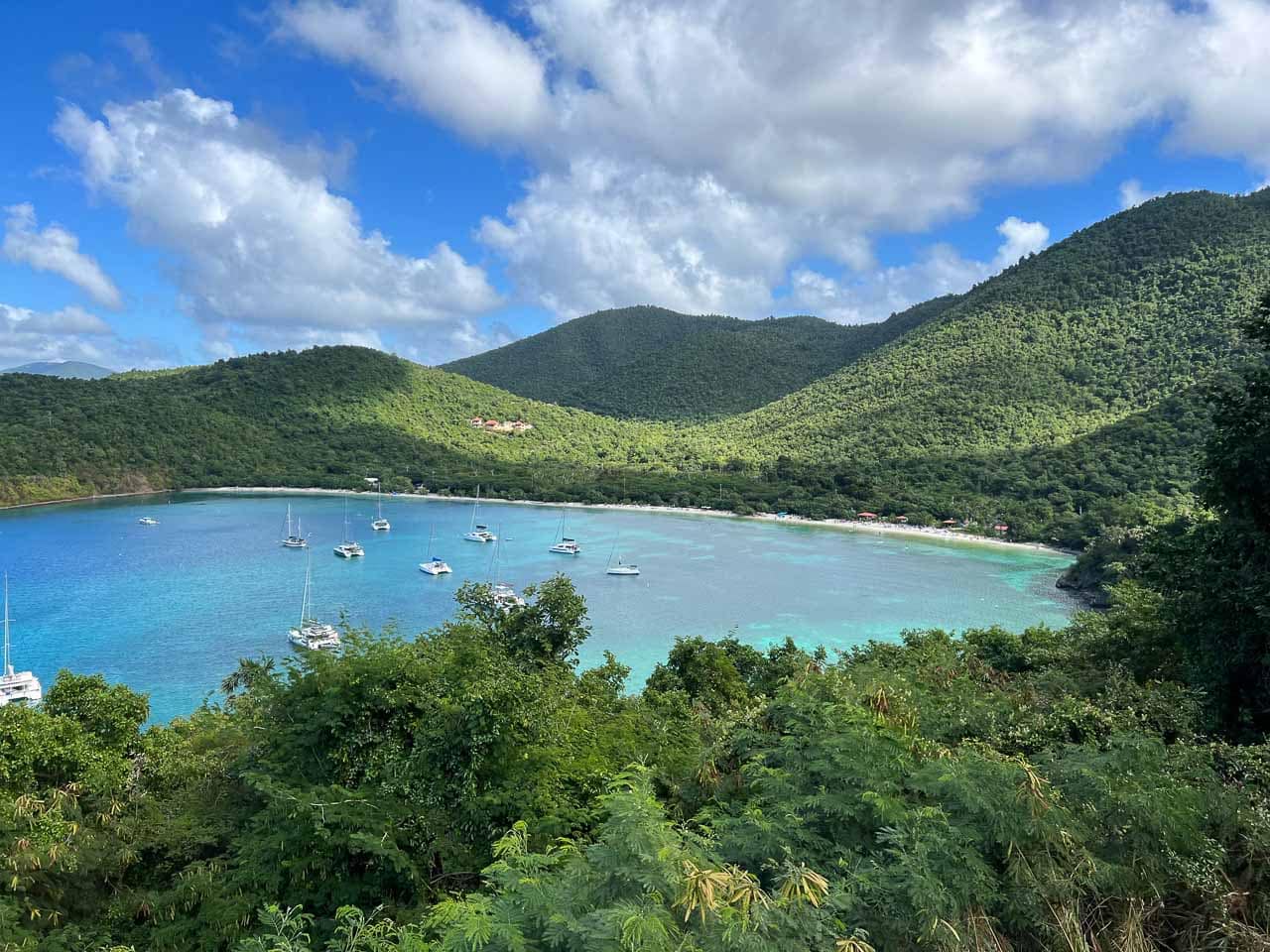
Two to Three Days in Virgin Islands National Park: A Deeper Dive
A two- or three-day trip allows you to experience more of what Virgin Islands National Park has to offer without feeling rushed. Here’s how I suggest you structure your time:
Day 1: Beaches and Snorkeling
- Trunk Bay: Begin your visit with world-class snorkeling and relaxation.
- Cinnamon Bay: After Trunk Bay, head to gorgeous Cinnamon Bay Beach, the longest beach in the park where you can explore plantation ruins, hike the Cinnamon Bay Trail, rent water sports equipment, grab food and drinks, and visit the beach shop. You can even stay in eco-tents at the Cinnamon Bay Campground, which is what I did and could not recommend more.
- Dinner in Cruz Bay: Spend your evening in Cruz Bay, the main town on St. John, enjoying local cuisine at one of its many restaurants.
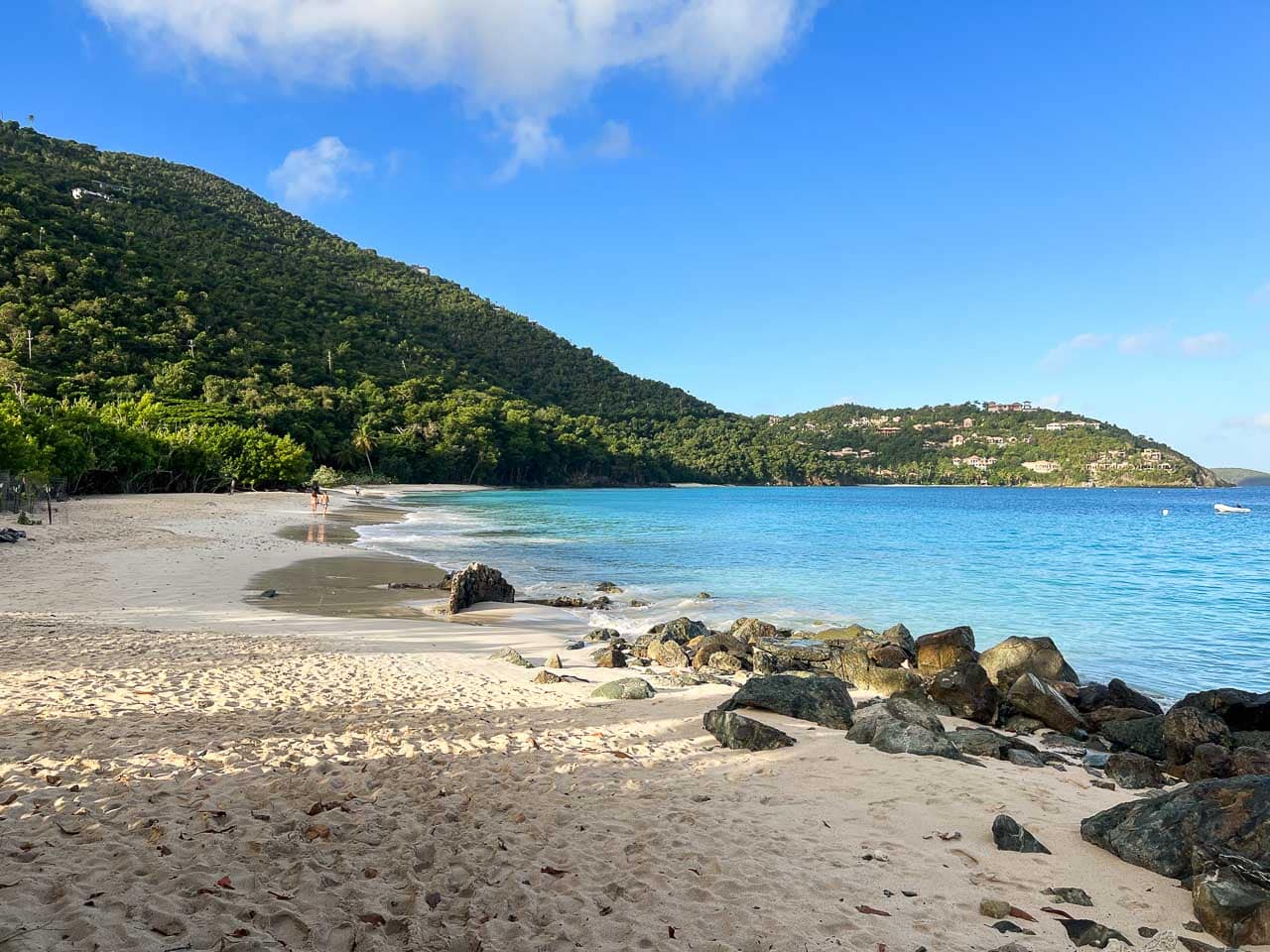
Day 2: Hiking and History
- Reef Bay Trail: Dedicate your second day to hiking the Reef Bay Trail, one of the best hikes in Virgin Islands National Park. This 4.4-mile roundtrip trail descends through the forest to ancient petroglyphs and the remains of a sugar plantation. Guided ranger tours are available, offering deeper insights into the history and ecology of the area.
- Annaberg Plantation: In the afternoon, visit the Annaberg Sugar Plantation Ruins, a well-preserved historic site that provides a window into the island’s fascinating colonial past.
- Evening at Maho Bay: End the day with a relaxing evening at Maho Bay. Go for a quick swim or snorkel and try to spot some sea turtles foraging in the seagrass beds.
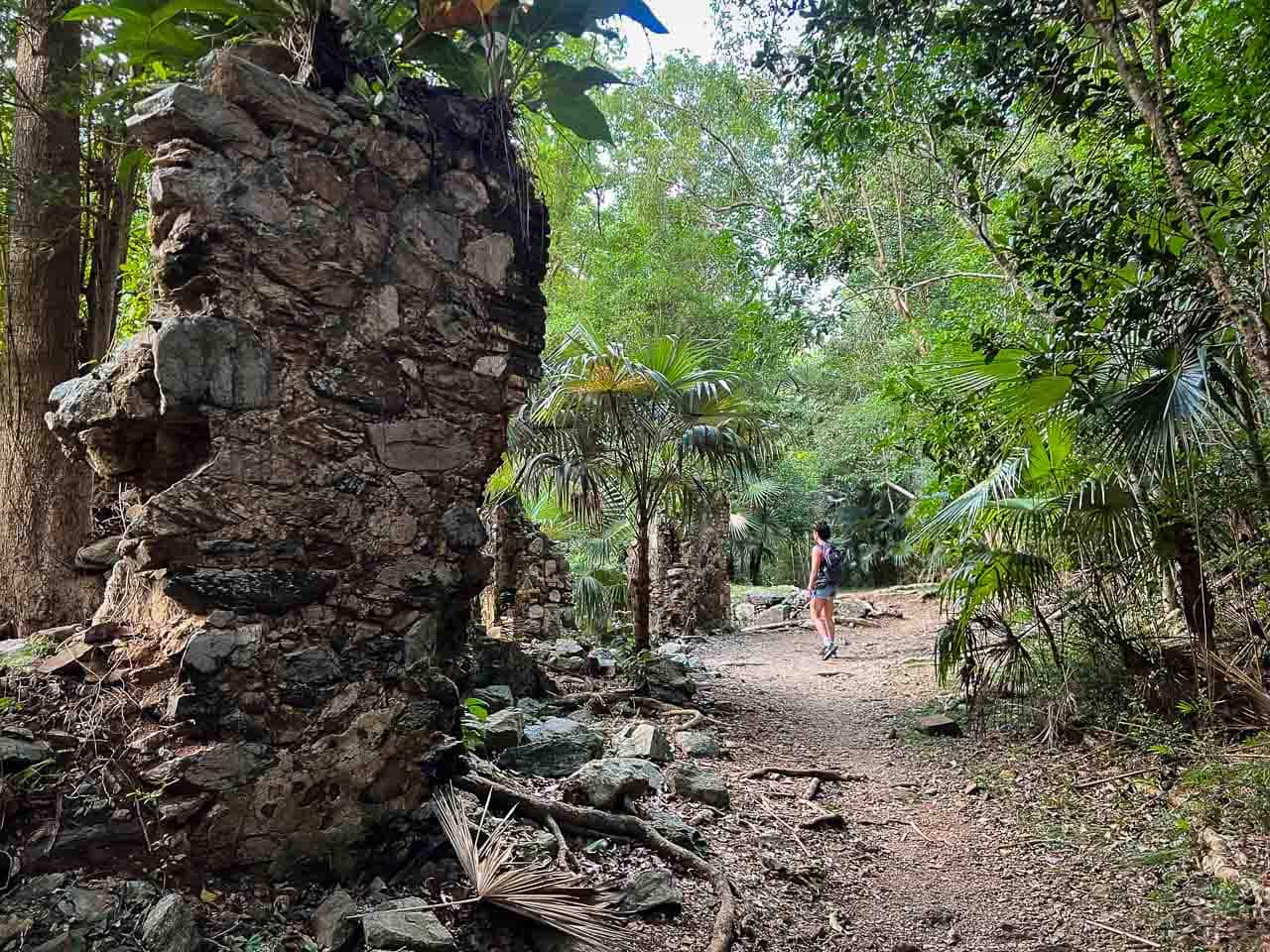
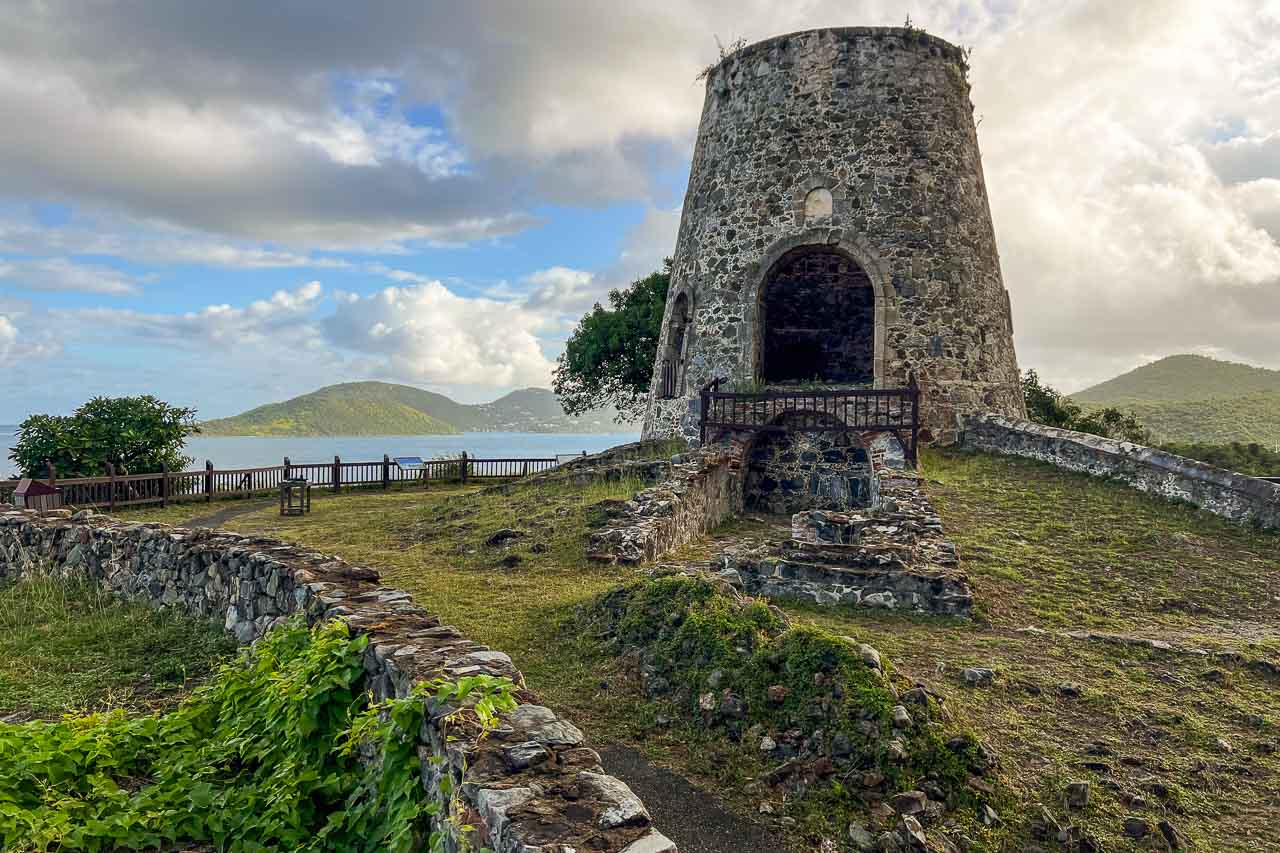
Day 3: Coral Reefs and Water Activities
- Hiking and Snorkeling at Waterlemon Cay: Spend the morning exploring the underwater world at Waterlemon Cay, considered one of the best snorkeling spots in the park. You’ll need to hike a short trail to reach the cay, but the vibrant coral reefs and marine life are well worth it. (Additionally, I also highly recommended hiking the Johnny Horn Trail up to the Murphy Great House Ruins around sunrise. It’s my favorite view in the entire park.)
- Paddleboarding or Kayaking: In the afternoon, rent a paddleboard or kayak at Maho Bay to explore the bay’s calm and shallow waters at your own pace. You’ll have an excellent chance of observing wildlife like rays and sea turtles.
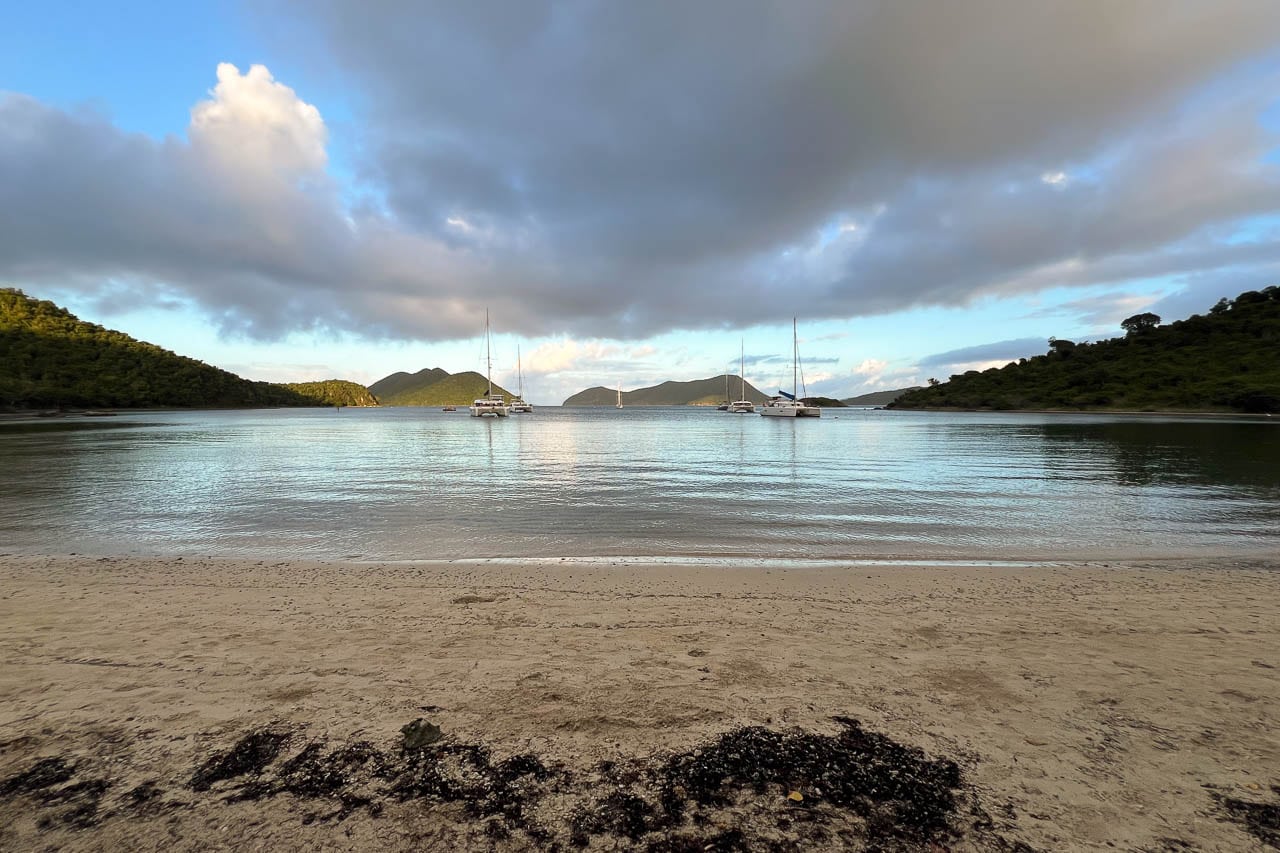
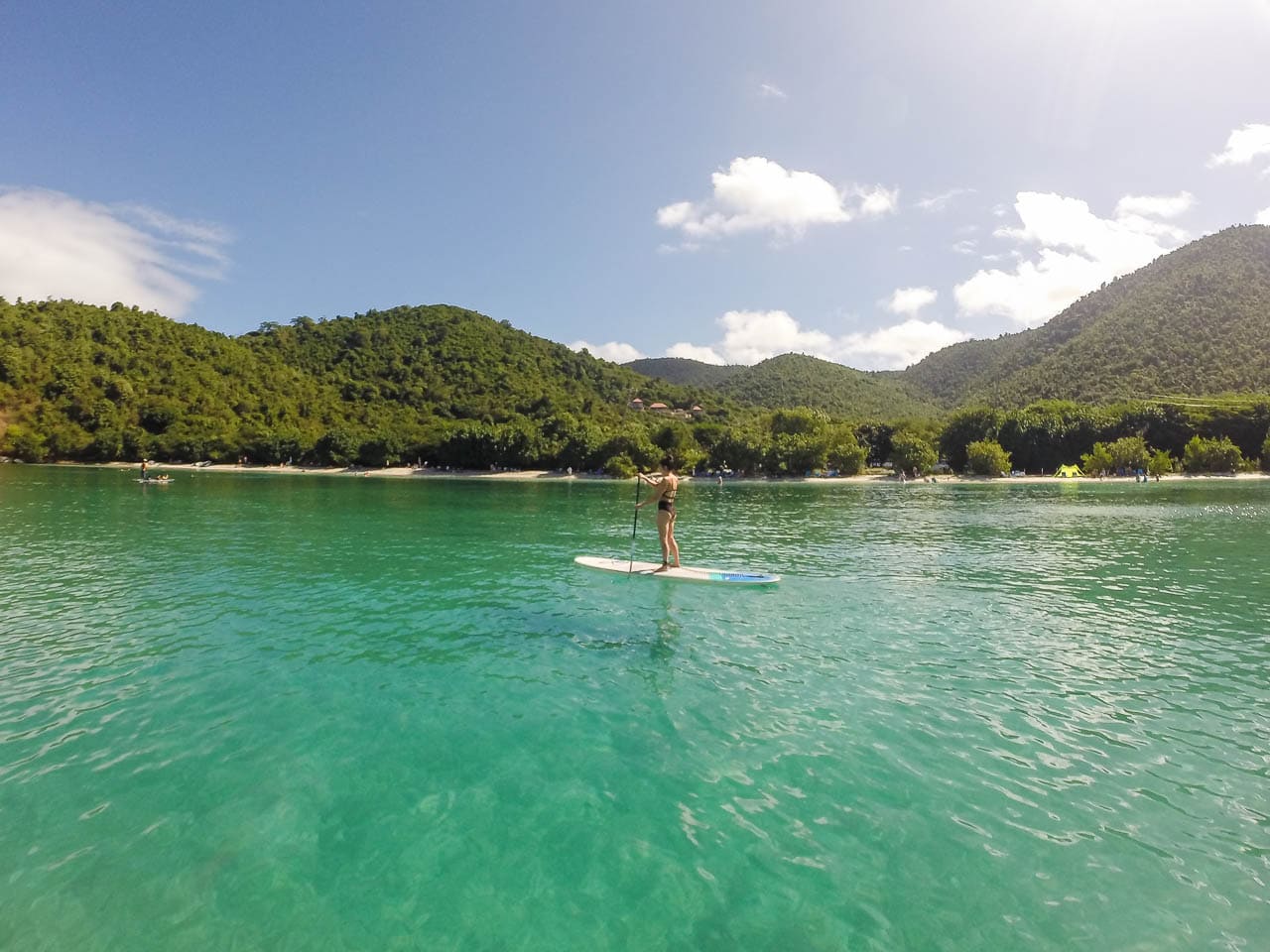
Five to Seven Days in Virgin Islands National Park: The Ultimate Immersion
For those fortunate enough to have a week or more, Virgin Islands National Park becomes an immersive retreat. With this amount of time, you can explore the park at a leisurely pace and delve into lesser-known areas.
Beaches Galore
With multiple days, you can visit a variety of beaches, each with its own unique charm:
- Salt Pond Bay: Located on the southeastern side of the island, Salt Pond Bay is quieter and offers excellent snorkeling and hiking opportunities.
- Honeymoon Bay: A secluded beach reachable only by boat or on foot via the Lind Point Trails in Cruz Bay, perfect for those seeking tropical beauty on a marvelous white sand beach.
- Francis Bay: Ideal for birdwatching and snorkeling, Francis Bay is a hidden gem that often has smaller crowds than other bays and beaches on St. John’s north shore.
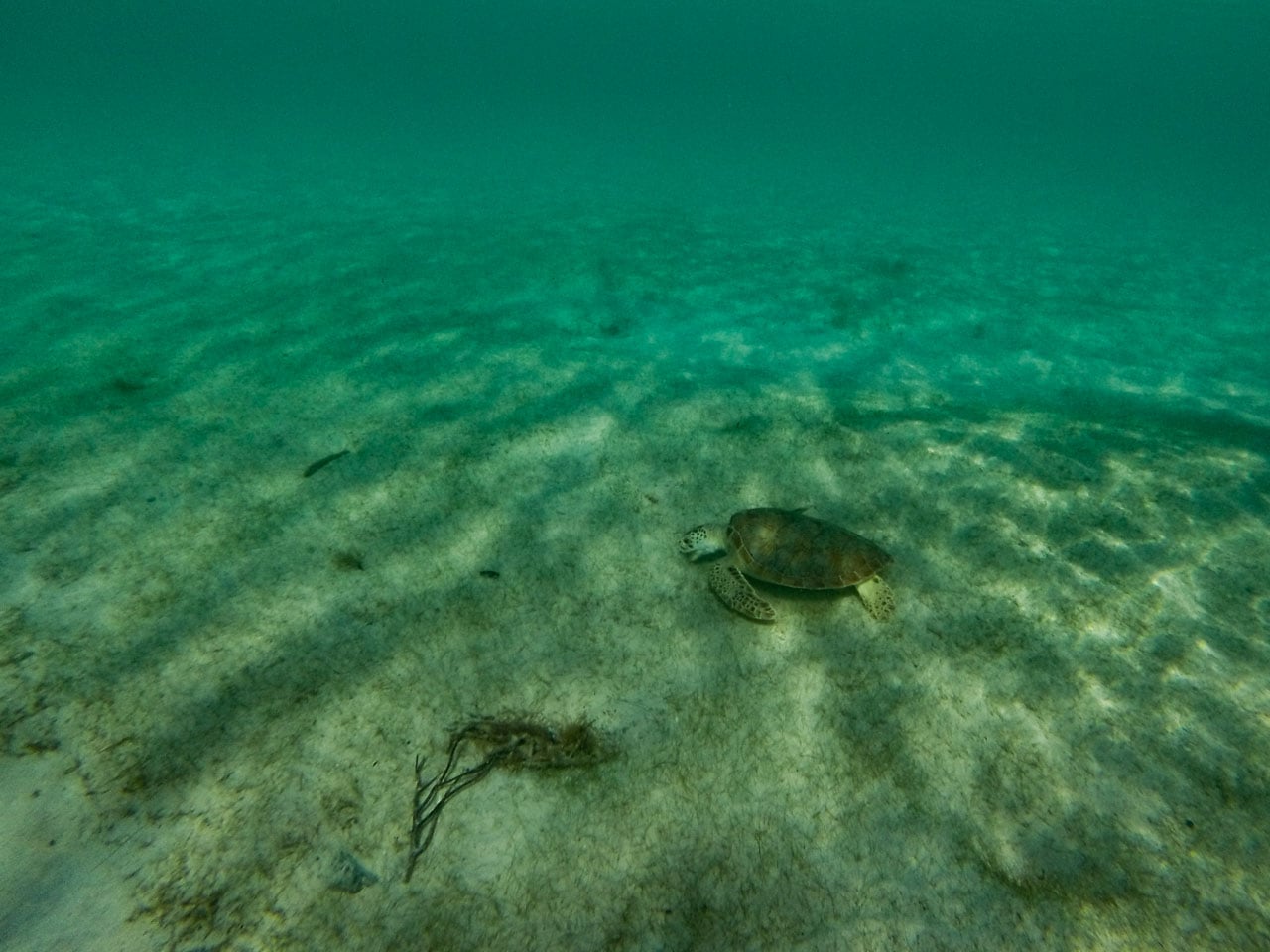
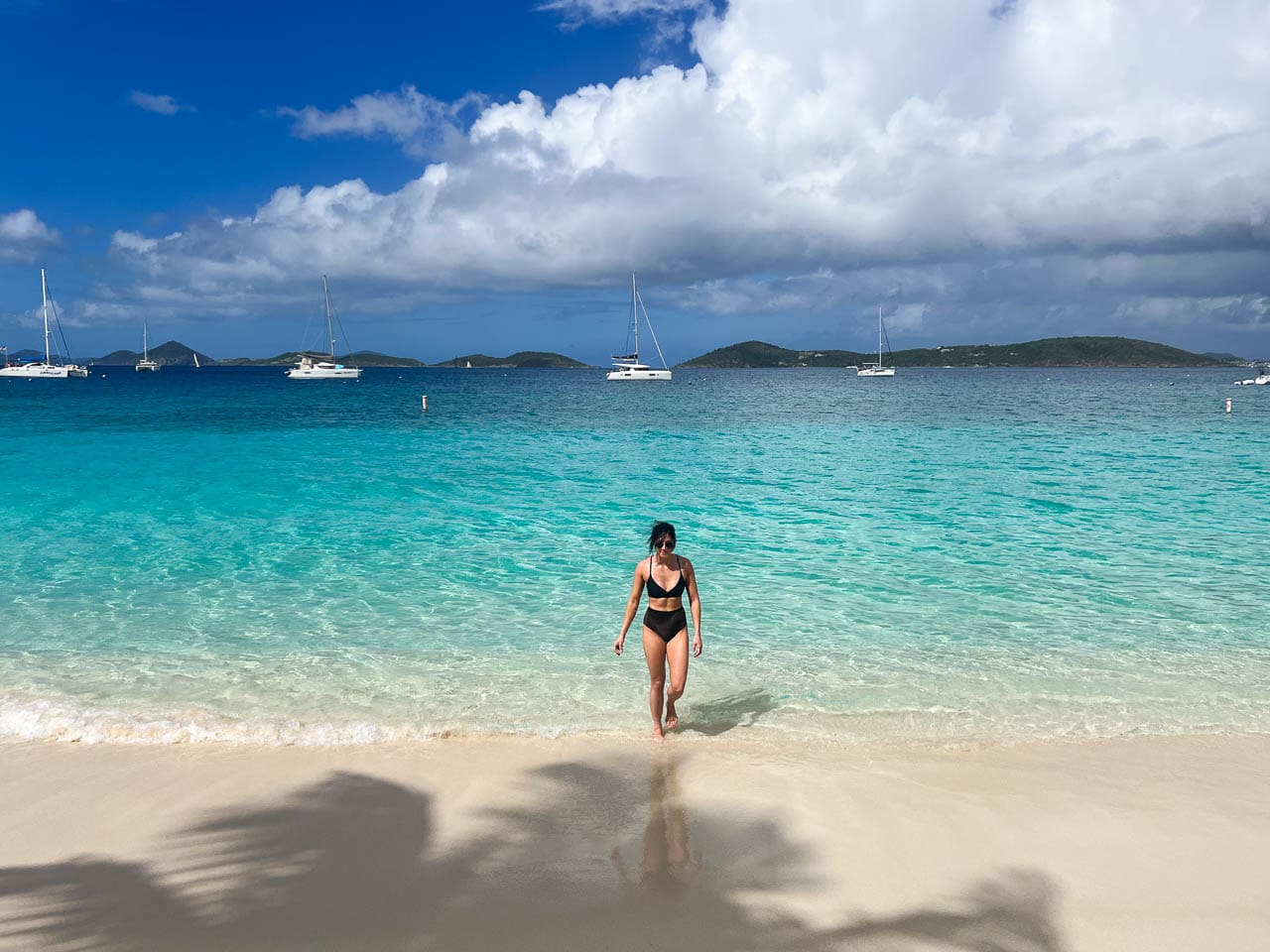
Additional Hiking Adventures
With more time, you can tackle some of the park’s more remote and/or less-traveled trails:
- Johnny Horn Trail: This moderate hike starts at the far end of Leinster Bay and offers stunning views of the island and takes you past historic ruins. From the Annaberg Sugar Plantation Ruins parking lot, it’s a 2.4-mile roundtrip hike to the scenic Murphy Great House Ruins.
- Ram Head Trail: Starting at Salt Pond Bay, this 2-mile roundtrip trail leads to dramatic cliffside views and is particularly stunning at sunrise or in the early evening. It’s probably my favorite trail in Virgin Islands National Park.
- Peace Hill Trail: More like a stroll rather than a hike, the Peace Hill Trail climbs 0.1 miles from the parking lot on North Shore Road to the ruins of the Peace Hill Windmill. From this bluff, you can enjoy sensational panoramic views that take in both Hawksnest and Trunk bays. It’s at its best at sunrise or sunset.
- Francis Bay Trail: A 0.7-mile loop made up a gravel and a boardwalk, the Francis Bay Trail takes you past a couple of historic ruins and through a mangrove-lined salt pond. It’s arguably the best place in the park to see birds, from pelicans and herons to moorhens, ducks, sandpipers, and cuckoos.
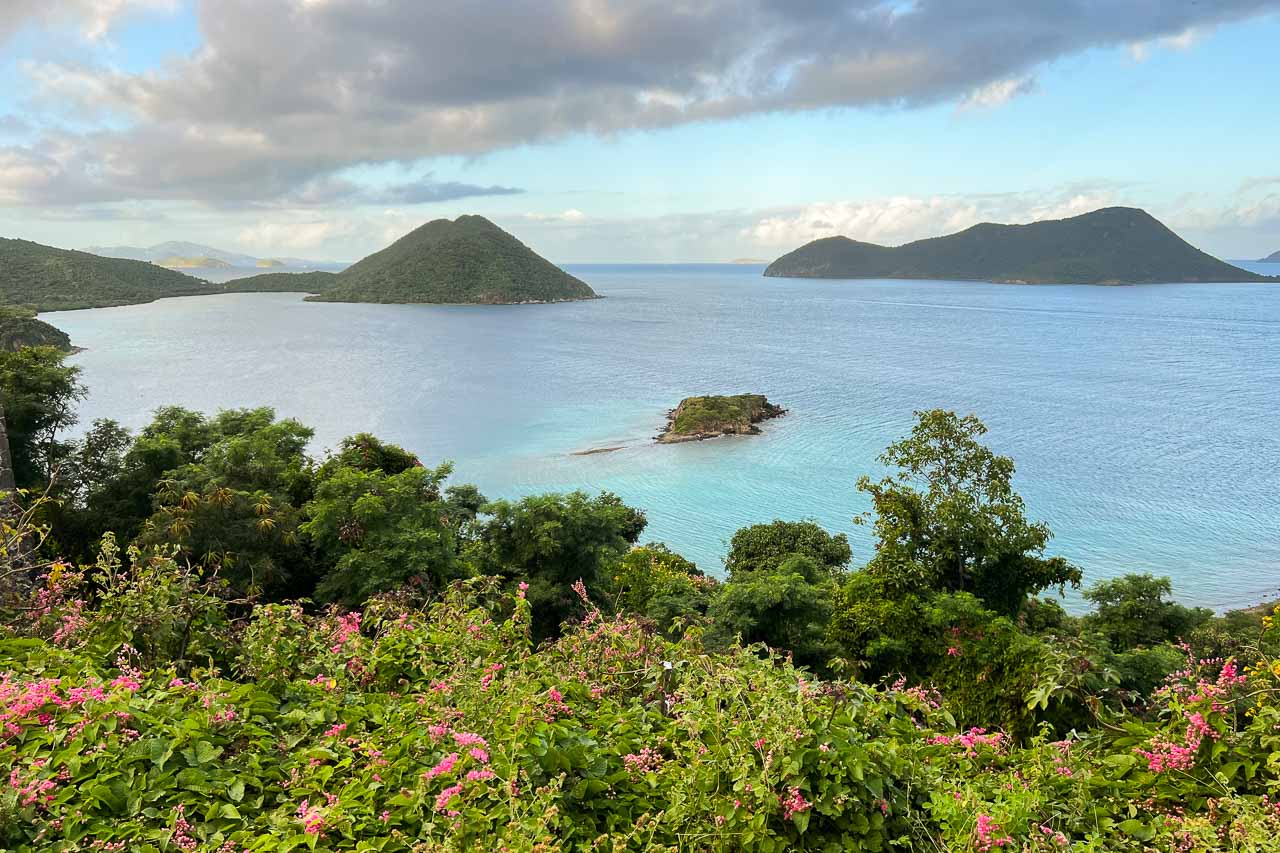
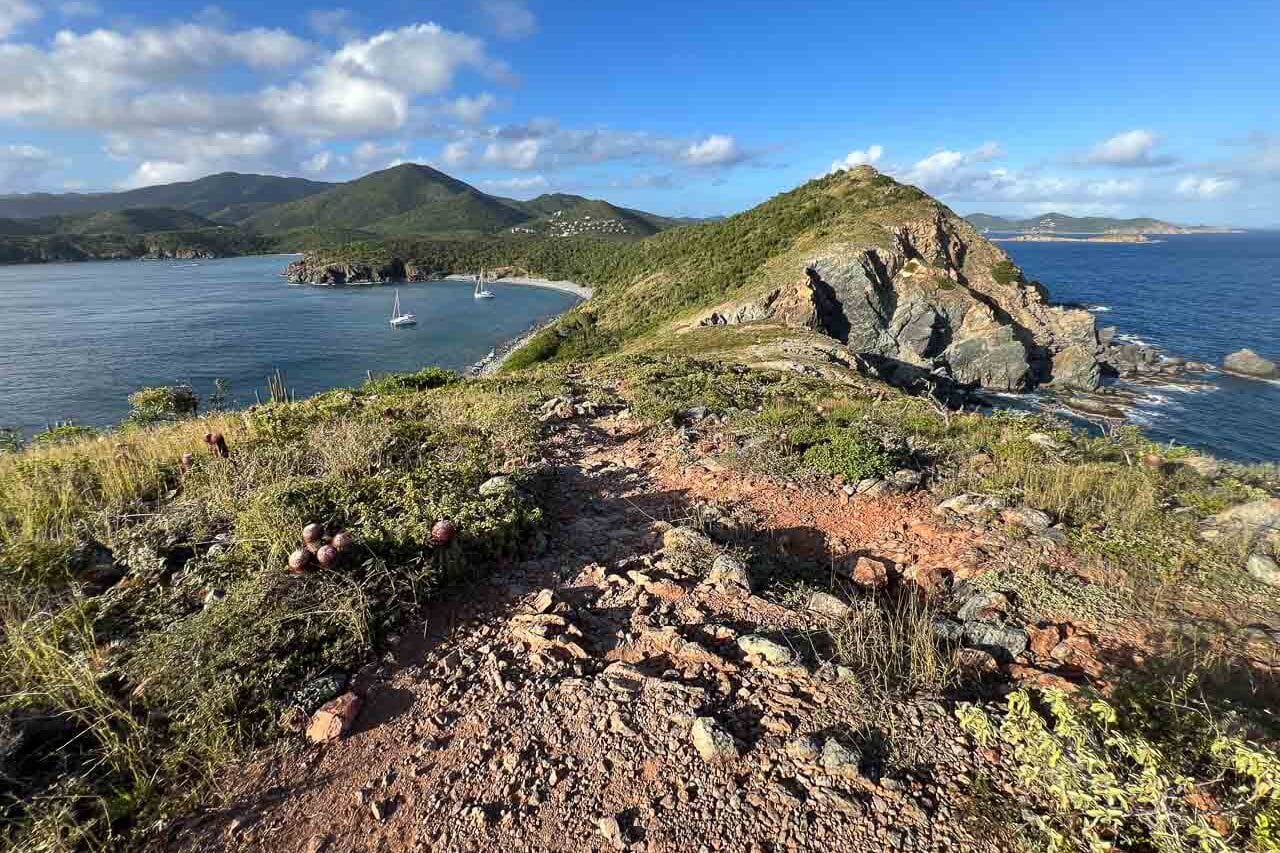
Explore the Water
- Chartered Boat Tours: Consider a day on the water with a private or group boat tour. You can visit nearby islands, snorkel in remote locations, and enjoy the scenery from a new perspective.
- Fishing and Sailing: With time to spare, try your hand at fishing or take a sailing lesson to immerse yourself in the island’s maritime culture.
Cultural Experiences
Take a deeper dive into St. John’s rich history and vibrant local culture:
- Coral Bay: Explore this quieter side of the island, known for its laid-back vibe and local art galleries.
- Cruz Bay Visitor Center: Learn about the national park’s history, ecology, and conservation efforts through exhibits and ranger-led programs.
Factors to Consider When Planning Your Visit
The amount of time you need in Virgin Islands National Park depends on several factors:
Interests
Are you a beach lover, a history buff, or an adventure seeker? If your main goal is to relax on the sand, a shorter visit may suffice. However, if you want to hike multiple trails, snorkel at various sites, and explore the park’s history, I recommend planning for at least three to five days.
I personally spent three days and three nights in Virgin Islands National Park. While that definitely was enough time to hike a handful of trails, visit all the popular beaches, do some snorkeling, and see most of the cultural highlights, I would’ve enjoyed an extra day or two to really slow down and spent some more time simply soaking up the Caribbean sunshine on the beaches.
Fitness Level
Many of the park’s attractions involve hiking or snorkeling. While most trails are accessible to beginners, some, like the Reef Bay Trail, require more stamina. Consider your fitness level when deciding how much ground you can cover in a day.
Short and easy hikes in Virgin Islands National Park I recommend are the Peace Hill Trail, Lind Point Trails to Honeymoon Beach, Annaberg Sugar Plantation Historic Trail, and the Francis Bay Trail.
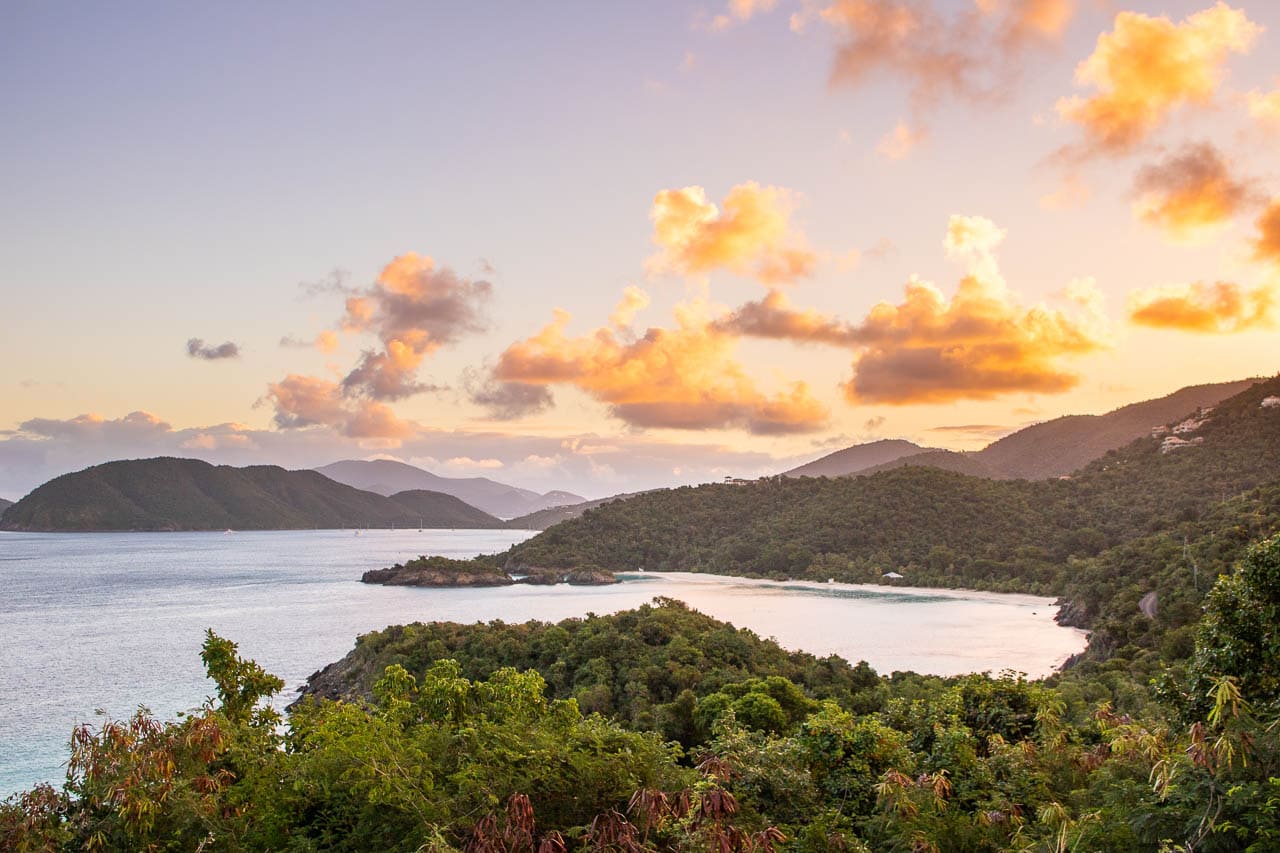
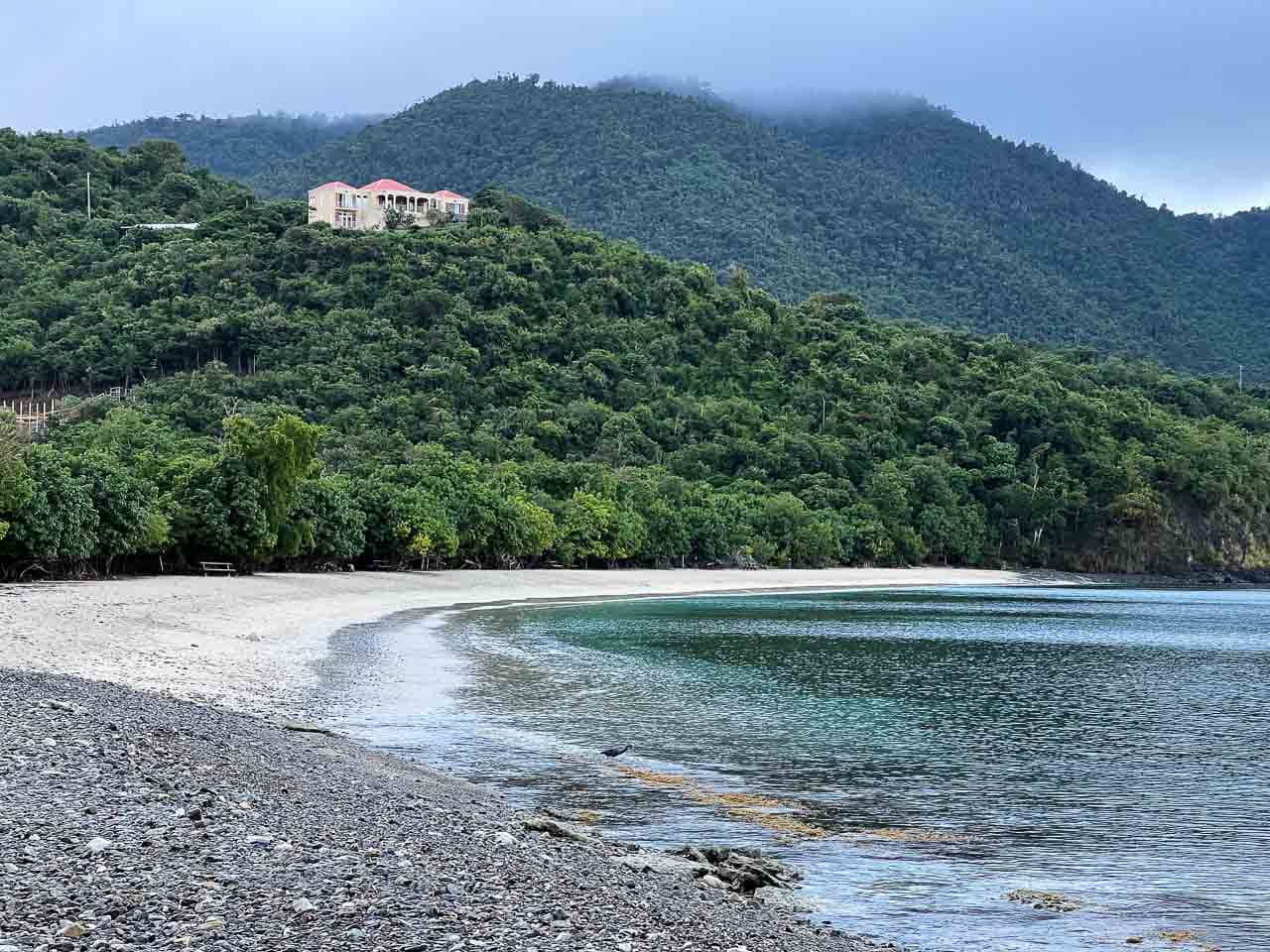
Travel Logistics
St. John is accessible by ferry from St. Thomas, and transportation within the island often requires a rental car or taxi services. Factor in travel time to and from the park when planning your trip.
I rented a 4WD car (very much recommended for those narrow and steep roads on St. John!) at Cyril E. King International Airport (STT) in St. Thomas and booked a roundtrip ferry ticket with the Big Red Barge Co.
Seasonal Considerations
The best time to visit Virgin Islands National Park is during the dry season (December to April), but this is also the busiest and most expensive period. If you visit during the off-season, you may have more solitude but should be prepared for potential rain, hotter temperatures, and more humidity.
Tips for Maximizing Your Time
- Plan Ahead: Make reservations for guided tours, snorkeling gear, and any activities that require permits. This is especially important during peak season.
- Pack Smart: Bring reef-safe sunscreen, plenty of water, sturdy hiking shoes, and snorkeling equipment if you have it.
- Start Early: Beat the heat and crowds by beginning your activities in the morning, ideally at sunrise (which can be quite spectacular in the Caribbean).
- Take Breaks: Virgin Islands National Park is a place to relax and enjoy, so don’t overschedule yourself. Leave time for spontaneous discoveries and quiet moments.
The amount of time you need in Virgin Islands National Park depends on your interests and pace. While a single day offers a glimpse of this tropical paradise, two to three days provide a well-rounded experience, and a week or more allows for complete immersion.
Regardless of the duration, your time in this stunning tropical national park will leave you with lasting memories of its natural beauty and cultural richness.
So, pack your bags, set your schedule, and get ready to experience one of the most enchanting destinations in the Caribbean and one of the most remarkable parks in the U.S. National Park System.

